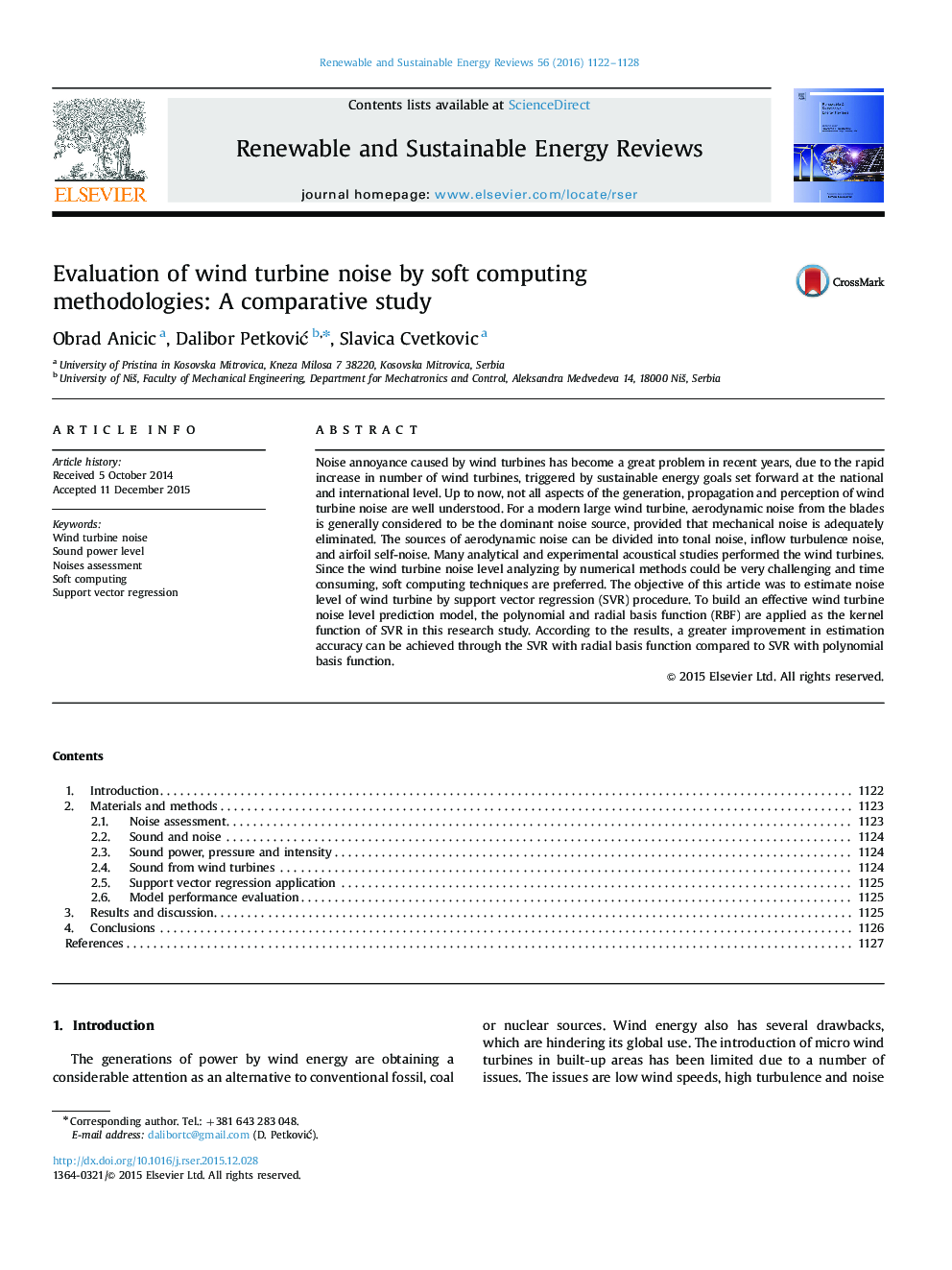| Article ID | Journal | Published Year | Pages | File Type |
|---|---|---|---|---|
| 8115011 | Renewable and Sustainable Energy Reviews | 2016 | 7 Pages |
Abstract
Noise annoyance caused by wind turbines has become a great problem in recent years, due to the rapid increase in number of wind turbines, triggered by sustainable energy goals set forward at the national and international level. Up to now, not all aspects of the generation, propagation and perception of wind turbine noise are well understood. For a modern large wind turbine, aerodynamic noise from the blades is generally considered to be the dominant noise source, provided that mechanical noise is adequately eliminated. The sources of aerodynamic noise can be divided into tonal noise, inflow turbulence noise, and airfoil self-noise. Many analytical and experimental acoustical studies performed the wind turbines. Since the wind turbine noise level analyzing by numerical methods could be very challenging and time consuming, soft computing techniques are preferred. The objective of this article was to estimate noise level of wind turbine by support vector regression (SVR) procedure. To build an effective wind turbine noise level prediction model, the polynomial and radial basis function (RBF) are applied as the kernel function of SVR in this research study. According to the results, a greater improvement in estimation accuracy can be achieved through the SVR with radial basis function compared to SVR with polynomial basis function.
Related Topics
Physical Sciences and Engineering
Energy
Renewable Energy, Sustainability and the Environment
Authors
Obrad Anicic, Dalibor PetkoviÄ, Slavica Cvetkovic,
